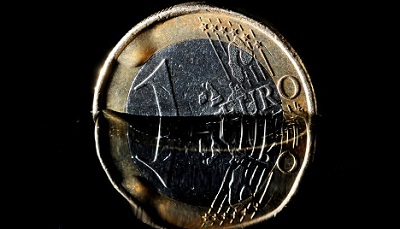Time to tell the taxpayer tough truths: why and how to save the euro


By Luis Arroyo, in Madrid | The Ralphanomics blog has a post on velocity of circulation of money that brings a very interesting intuitive graph: how the velocity of money (M1) has changed since the crisis began. Against this variable, there is a comparison to the 1930s Great Depression –the black line at the right angle, between 1920 and 1932. The velocity of money is simply the GDP divided by money…
By Luis Arroyo, in Madrid | The Ralphanomics blog has a post on velocity of circulation of money that brings a very interesting intuitive graph: how the velocity of money (M1) has changed since the crisis began. Against this variable, there is a comparison to the 1930s Great Depression –the black line at the right angle, between 1920 and 1932. The velocity of money is simply the GDP divided by money…
One would think it’s all rumours and half-baked drafts more akin to belong to a neverending script than to the global finances’ reality, but that doesn’t prevent financial institutions from making a serious effort to analyse possible and probable results of their implementation. JP Morgan says “The possibility that any important news/measure comes out of some of the many meetings/summits that are planned for the next week and a half,…
Many in the euro zone would be happy seeing this Barclays forecast becoming true, not the least in its peripheral shores. “We have revised our ECB projection and look for the ECB to lower the main policy rate by 25bp at its meeting on 6 October, and to widen the interest rate ‘corridor’ back to +/-100bp, which would entail lowering the deposit facility rate by 50bp to 0.25%. In turn,…
According to ACF, the total amount of debt purchased by the ECB has doubled since the beginning of August. “The ECB increased purchases of sovereign debt during the last week up to €13.960bn. This is comparing to the previous week’s €13.300bn. The total amount of debt purchased by the ECB has almost doubled in the last five weeks. Since the purchasing program began in May 2010 up until last August…
LONDON | For the European Central Bank (ECB), Mr Juergen Stark’s resignation from its executive board on Friday was a “personal” matter, and judging by the reaction on the markets that description turned out to be fitting: at 4:00 pm, the euro was trading against $1.37, down 1.6% and at its lowest level since the end of February. “No wonder,” as international financial markets, HF expert and Webster Finance Professor Jacob…
By Miguel Navascués, in Madrid | There has always been tension between the IMF and those countries under its analysis over the numbers in the fund’s economic forecasts. But this time the battle between the IMF’s Ms Lagarde and the European authorities has been set over valuations of sovereign bonds held by the banks. According to Lagarde, were the bonds in the European banks’ portfolios to be valued at their current market price……